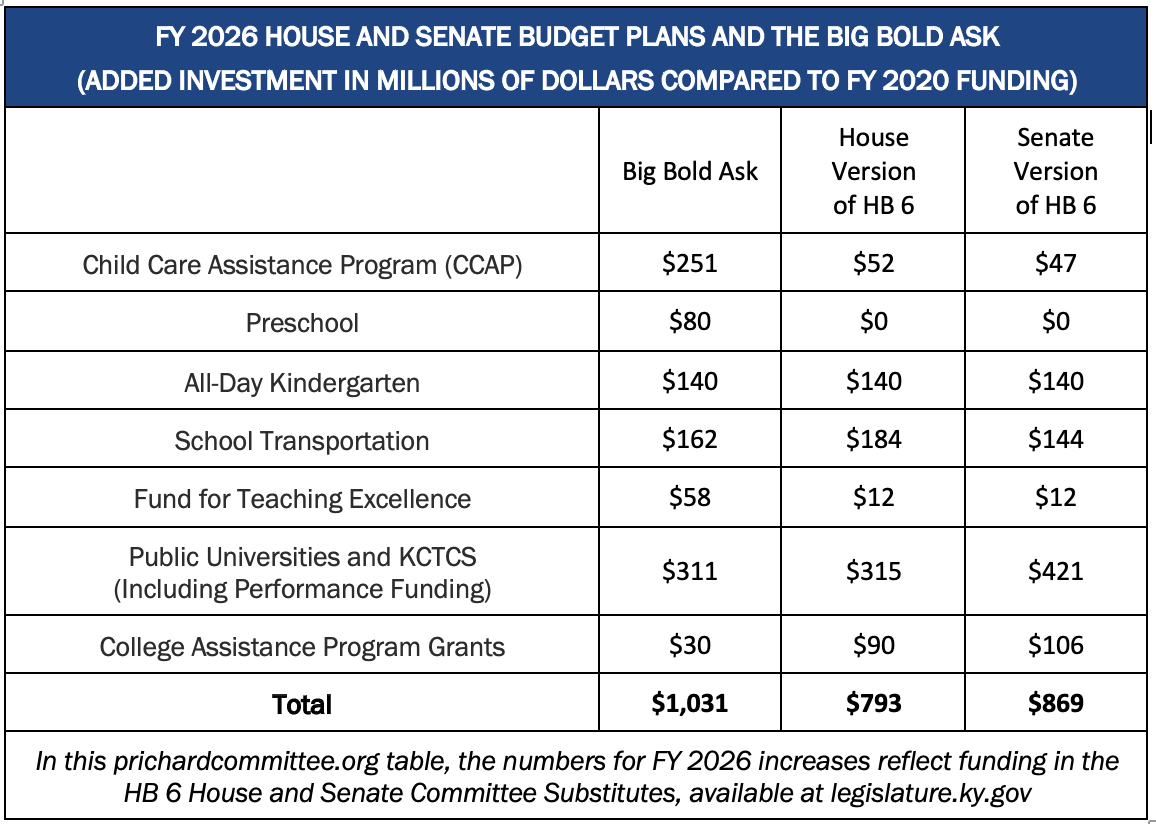On March 13, the Senate Appropriations and Revenue Committee reported out its version of the state budget for the next two fiscal years. The House and Senate are expected to move quickly into conference committee meetings to hammer out a shared final spending plan. Here’s a rapid look at how the Senate’s approach compares to the Big Bold Ask‘s call for major steps up in Kentucky education investment.
Parts of the Senate budget plan are good news:
- All-day kindergarten funding meets the full Ask in both House and Senate versions.
- Public universities and the Kentucky Community and Technical College System funding meets and exceeds the Ask in both versions, including performance-based incentive funding.
- CAP (College Assistance Program) scholarship dollars similarly meet and exceed the Ask in both versions.
- K-12 school transportation funding meets the Ask in the House version and mostly does so in the Senate version.
- Teaching quality efforts included funding for the Read to Succeed initiative begun in 2022 and for added stipends to teachers who earn National Board certification.
Other parts raise concerns:
- Teaching quality efforts do not include either broad or targeted efforts to rebuild funding for professional development, leaving most of the quality portion of Big Bold Ask unanswered.
- CCAP (the Child Care Assistance Program) reflects increases that are valuable and yet too small to address Kentucky’s long-term need for early childhood opportunities that prepare children for future learning and too small to meet the immediate challenge of avoiding a sharp reduction in child care access for low-income children and their working parents.
- Preschool receives no added dollars, the only portion of the Ask with no added investment at all since FY 2020.
Here’s a chart version of those Big Bold Ask elements, showing both House and Senate versions of the budget for FY 2026 (the second year of each chamber’s two-year spending plan).

For readers interested in other specific programs or in a fuller view of education spending, here are the newest versions of our overviews for early childhood, K-12 learning, and postsecondary education funding.
The House Committee Substitute and Senate Committee Substitute versions of House Bill 6 are the original sources for this analysis, and those who love detail may want to take a look at those, too.


